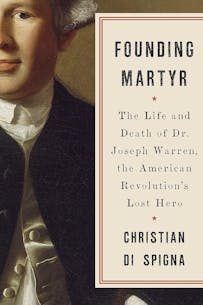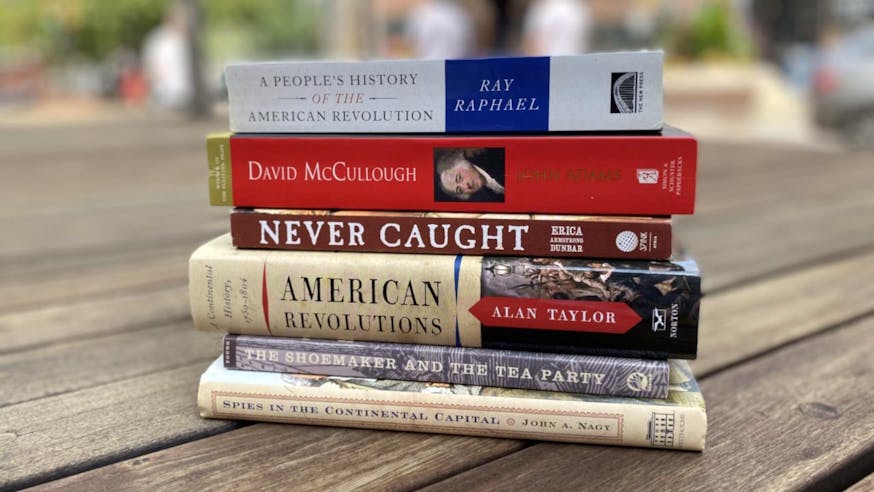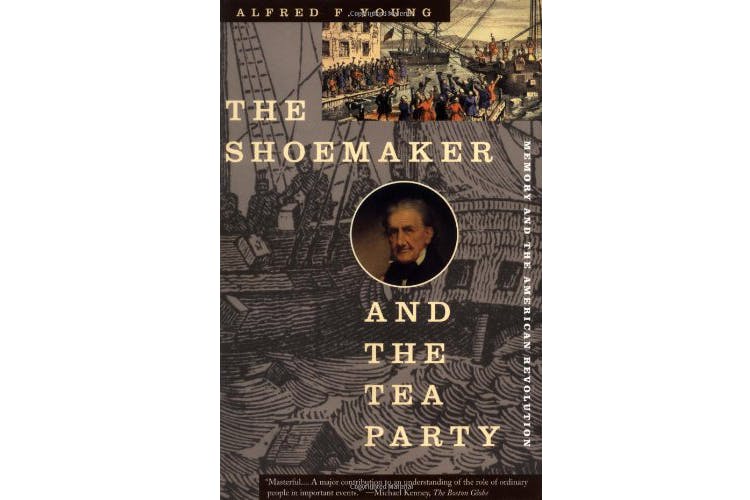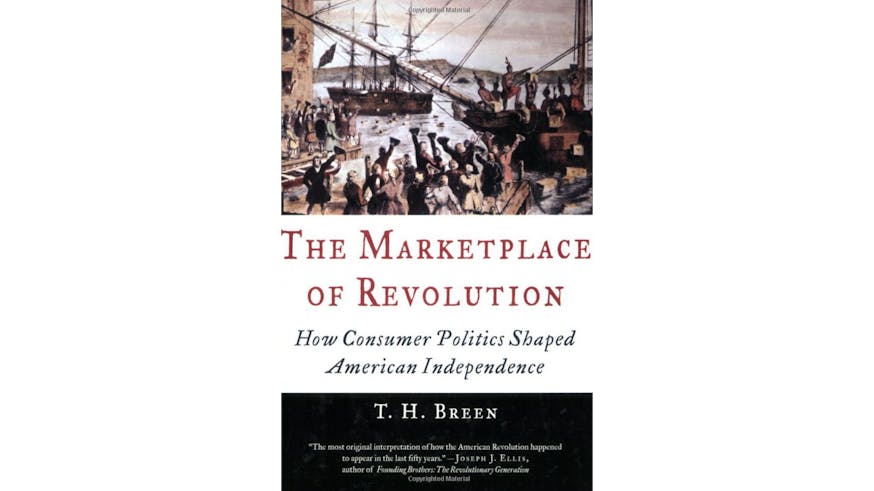Read the Revolution
Founding Martyr
December 13, 2023
Purchase the book from Penguin Random House.
December 16, 2023, marks the 250th anniversary of the Boston Tea Party. The story has been told and retold for the past two centuries, but even today, no one knows for sure who the men dumping the tea were.
In Founding Martyr: The Life and Death of Dr. Joseph Warren, the American Revolution’s Lost Hero, Christian Di Spigna gives credit where it is long overdue. Harvard-educated Dr. Joseph Warren was well-respected in Boston and participated in numerous organizations and actions as the Americans began to rebel against the British in the early 1770s. In addition to being a key planner of the Boston Tea Party – although, as Di Spigna explains, it seems unlikely that Warren was one of the men who actually dumped the tea – Warren served as president of the Massachusetts Provincial Congress, led the North End Caucus, and was Grand Master of the Ancient Grand Lodge of Massachusetts, among other roles. He also authored the Suffolk Resolves in response to the Coercive Acts in 1774, before his untimely death on the field during the June 17, 1775, Battle of Bunker Hill.
Joseph Warren’s death at age 34 cut short not only his own life but the possibilities and influence that he could have had on the American Revolution. Many have suggested that Warren would have had an important role in American history, with at least one source noting that had Warren lived, George Washington would have “remained in obscurity.” Di Spigna offers a compelling case for Warren’s significance in the events that took place from 1765 to 1775.
Read the following excerpts to trace Warren’s involvement in the Boston Tea Party – 250 years ago this month.
Excerpt
On May 10, 1773, Parliament passed the Tea Act, which granted the nearly bankrupt British East India Company a monopoly on the exportation of dutied tea to the colonies. Over the years, [Joseph] Warren had warned about such encroachments by British authority; now they were becoming a reality. Objecting to the act’s obvious restriction of free trade, colonists were also concerned that Britain would control the importation of more goods into the colonies. To many merchants, the prospect of other monopolies raised the frightening specter of a plot to seize colonial rights.
Resistance to the monopoly on tea in Boston was centered in the North End Caucus, whose members, spearheaded by Warren, secretly voted and pledged with “their lives and fortunes” that the “tea shipped by the east-India Company shall not be landed.” The Crown had assigned five agents to sell the tea, three of whom happened to be former patients of Dr. Warren – Governor Hutchinson’s two sons, Elisha and Thomas Jr., and the merchant Richard Clarke, the father-in-law of the painter John Singleton Copley. The North End Caucus appointed Warren, along with Drs. Benjamin Church and Thomas Young, to a committee to draft a resolution aimed at the tea consignees. An anonymous letter was sent to Clarke, demanding that he appear at Liberty Tree on November 3 to resign his commission. The consignees met and consulted with each other and determined it was in their best interests not to appear before the disgruntled mob gathering at Liberty Tree.
[…]
Sign Up
Get biweekly Read the Revolution featured excerpts right to your inbox.
When Warren realized that the agents would not relinquish their commissions, he and his colleagues decided on a more destructive plan of action. The first cargo of dutied tea arrived in Boston Harbor on board the Dartmouth on November 28. The ship landed and unloaded all its goods except for tea. By British law, the vessel had twenty days, till midnight on December 16, to unload all its cargo and pay the duties; if it did not do so, the Crown could seize and sell the unloaded cargo. The radical leaders would have to convince the consignees or Governor Hutchinson to return the tea. If they did not, any acts of retribution would be committed directly on Crown property. The Whigs placed the ships under a group watch to ensure the tea would not be landed. Warren was one of the Whig leaders who “attended constantly” at the series of tea meetings held in November and December.
On December 11, a committee headed by Warren visited the well-connected merchant John Rowe, attempting to gather as much information as possible prior to the tea being landed and unloaded. The committee inquired about Captain Bruce and his ship, the Eleanor – partly owned by Rowe – which was carrying approximately 112 chests of tea. (Francis Rotch, the owner of the two other ships carrying the tea, was one of Warren’s erstwhile patients.)
On every second Thursday of the month, the St. Andrew’s Lodge held its meeting at the Green Dragon Tavern, where Warren’s North End Caucus sometimes met. On December 16 (the second Thursday of the month), Warren and four other Masonic brothers attended a meeting of St. Andrew’s at the Green Dragon, but the “lodge closed on account of the few members in attendance.” Instead, the day’s action was centered on the Old South Meeting House, where thousands thronged throughout the day to deliberate what to do about the tea. In the evening, Warren joined the assembled radical leaders, and was one of the “chief Speakers,” to await a response from Francis Rotch, who had applied to Governor Hutchinson for a pass that would allow him to return the tea. Hutchinson refused his request…
Within fifteen minutes from the frigid and rain-soaked streets came a sudden “hideous yelling…imitating the powaws of Indians and others the whistle of a boatswain, which was answered by some few in the house; on which numbers hastened out as fast as possible.” As the meeting dissolved, patriots disguised as Mohawk Indians, their faces blackened, some armed with clubs and cutlasses, hastened toward Griffin’s Wharf. There they boarded three docked vessels – the Eleanor, the Dartmouth, and the brig Beaver – which collectively held more than 340 chests of the East India tea. Warren remained in Old South until only approximately fifty to one hundred people were left.
That night the “bitter brew” – worth over nine thousand pounds – was dumped into Boston Harbor. The entire affair, according to Henry Bromfield, an elegant and eminent Boston merchant, “was conducted with the greatest dispatch, regularity and management, so as to evidence that there were people of sence and of more discernment” directing the mobbish participants. When it came to organized crowd action, little happened spontaneously. Such a large-scale incident involving scores of patriot actors was most certainly planned and controlled by the top Whig leaders, including Warren.
Warren’s exact role in this incident remains unclear. Naturally, anyone who participated in the event knew they risked arrest by British authorities, underscoring the need for disguise. Most historians assert that Warren was not a participant in the Boston Tea Party, or they claim that the existing evidence is inconclusive. While Warren most likely did not physically dump chests of tea into the harbor, he was almost certainly one of the event’s main orchestrators. After all, he had been involved in almost every aspect of opposing the Tea Act since the news of its passage had arrived months earlier. And along with Samuel Adams, Thomas Young, and Josiah Quincy, Warren was present in the Old South Meeting House just prior to the commencement of the destruction of the tea – which provided these leaders with a solid alibi to avoid arrest. Given the proximity of Griffin’s Wharf to Old South, Warren was highly unlikely to go anywhere else upon leaving.
Christian Di Spigna, Founding Martyr: The Life and Death of Dr. Joseph Warren, the American Revolution’s Lost Hero (Broadway Books, 2018), 131-132, 133-135.
Tags
Learn More

Read the Revolution

The Shoemaker and the Tea Party

